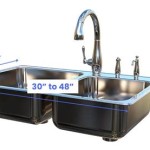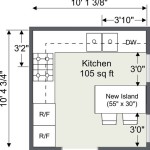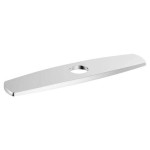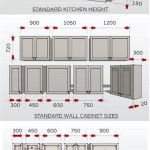33 Inch Undermount Kitchen Sink: A Comprehensive Guide
The 33-inch undermount kitchen sink represents a popular choice for homeowners seeking a balance between ample workspace and efficient use of counter space. This size offers significant advantages over smaller models while remaining manageable for standard kitchen layouts. Understanding the features, benefits, and considerations surrounding this sink type is crucial for making an informed purchase.
Undermount sinks, as the name suggests, are installed beneath the countertop. This installation method creates a seamless transition from the countertop surface to the bowl of the sink, offering a clean and contemporary aesthetic. This design also eliminates the rim that typically sits on top of the countertop with top-mount or drop-in sinks, preventing the accumulation of dirt and debris. This makes cleaning and maintenance considerably easier.
This article explores the various aspects of the 33-inch undermount kitchen sink, covering material options, installation considerations, advantages, disadvantages, and key factors to consider when selecting the right model for your specific needs. It will provide the necessary information for homeowners, contractors, and designers to make well-informed decisions regarding this prevalent kitchen fixture.
Understanding the Dimensions and Capacity
The "33-inch" designation refers to the overall width of the sink. The length and depth can vary depending on the specific model and manufacturer. Typical depths for 33-inch undermount sinks range from 8 to 10 inches, while lengths can vary from 18 to 22 inches. These dimensions provide a substantial basin for washing large pots, pans, and dishes, making it suitable for households that cook frequently or entertain guests.
The internal capacity of a 33-inch undermount sink is significantly larger than smaller sink options, offering increased flexibility for various kitchen tasks. The greater depth allows for more efficient soaking of dishes and provides ample space for maneuvering larger items. This added capacity reduces splashing and makes cleanup more convenient and efficient.
Before purchasing a 33-inch undermount sink, it is essential to accurately measure the existing cabinet base to ensure compatibility. The sink must fit comfortably within the cabinet opening, leaving sufficient space for plumbing connections and necessary support structures. Professional installation is often recommended to ensure a secure and watertight seal.
Exploring Material Options
The material chosen for a 33-inch undermount sink significantly impacts its durability, appearance, and maintenance requirements. Several popular options are available, each with its own set of advantages and disadvantages.
Stainless Steel: Stainless steel is perhaps the most common material for kitchen sinks due to its durability, stain resistance, and ease of cleaning. It is also relatively affordable compared to other options. Stainless steel sinks are available in various gauges (thickness), with lower gauge numbers indicating thicker and more durable steel. A gauge of 16 or 18 is generally recommended for optimal performance and longevity.
Granite Composite: Granite composite sinks are made from a mixture of granite stone dust and acrylic resins. These sinks are extremely durable, scratch-resistant, and heat-resistant. They are also available in a wide range of colors and finishes, allowing for greater design flexibility. Granite composite sinks offer a modern and sophisticated look that complements various kitchen styles.
Fireclay: Fireclay sinks are made from clay fired at extremely high temperatures, resulting in a durable and non-porous surface. These sinks are known for their classic and elegant appearance. They are resistant to staining, scratching, and chipping, making them a long-lasting option. However, fireclay sinks can be heavier than other materials, requiring extra support during installation.
Copper: Copper sinks offer a unique and distinctive look to the kitchen. Copper is naturally antimicrobial, making it a hygienic choice. Copper sinks develop a patina over time, which adds to their character and charm. However, copper sinks can be more expensive than other materials and require specific cleaning products to maintain their appearance.
Cast Iron: Cast iron sinks are coated with a layer of enamel, providing a durable and attractive finish. They are known for their excellent heat retention and sound dampening properties. However, cast iron sinks are heavy and can be prone to chipping if not properly cared for.
Each material has its own set of pros and cons. The best choice depends on individual preferences, budget, and the overall design of the kitchen.
Acrylic sinks while less popular, provides a cost effective solution and are resistant to stains. However, it may scratch easier with metal utensils and cookware. It is a good option for those that are on a tight budget as long as you take care using the sink.
Installation Considerations and Requirements
Installing a 33-inch undermount sink requires careful planning and execution. Professional installation is highly recommended, especially for homeowners without prior plumbing experience. The installation process typically involves the following steps:
Template Creation: A template is used to accurately mark the cutout on the countertop for the sink. This template is often provided by the sink manufacturer. If the template is not available, precise measurements must be taken to create one.
Countertop Cutout: Using the template as a guide, the countertop is carefully cut to create the opening for the sink. This step requires specialized tools and expertise to avoid damaging the countertop material. The edges of the cutout are typically sealed to prevent water damage.
Sink Attachment: The undermount sink is attached to the underside of the countertop using clips, epoxy, or a combination of both. The sink must be securely fastened to ensure stability and prevent leaks. The appropriate adhesive and fastening method depend on the countertop material and the sink design.
Plumbing Connections: The drain and water supply lines are connected to the sink. This involves attaching the faucet, drain assembly, and connecting the water supply lines. All connections must be properly sealed to prevent leaks.
Sealing and Caulking: The seam between the sink and the countertop is sealed with silicone caulk to create a watertight barrier. This prevents water from seeping underneath the countertop and causing damage. The caulk should be applied smoothly and evenly for a professional finish.
Before installation, it is crucial to ensure that the cabinet base is strong enough to support the weight of the sink, especially when filled with water. Reinforcements may be necessary for weaker cabinets. It is also important to have all necessary plumbing supplies and tools on hand before beginning the installation process.
Proper installation is essential for the longevity and performance of the sink. A poorly installed sink can lead to leaks, water damage, and structural problems.
Advantages of a 33-Inch Undermount Kitchen Sink
The 33-inch undermount kitchen sink offers multiple advantages that make it a popular choice for modern kitchens.
Increased Workspace: The larger basin provides ample space for washing large pots, pans, and dishes. This is especially beneficial for households that cook frequently or entertain guests.
Easier Cleaning: The seamless transition between the countertop and the sink eliminates the rim that typically collects dirt and debris. This makes cleaning and maintenance significantly easier.
Modern Aesthetic: The undermount installation creates a clean and contemporary look that complements various kitchen styles. The absence of a visible rim adds to the sleek and minimalist design.
Improved Hygiene: The smooth surface of the undermount sink is easier to sanitize and less likely to harbor bacteria. This contributes to a cleaner and more hygienic kitchen environment.
Versatility: The 33-inch size is versatile enough to fit in most standard kitchen layouts while still providing ample workspace. It is a suitable option for both small and large kitchens.
Increased Resale Value: A well-chosen and properly installed kitchen sink can enhance the overall value and appeal of a home. A 33-inch undermount sink is often seen as a desirable feature by potential buyers.
Potential Disadvantages and Considerations
While 33-inch undermount sinks offer numerous advantages, there are also potential disadvantages and considerations to keep in mind.
Installation Complexity: Undermount sinks require precise countertop cutouts and secure attachment, making installation more complex than top-mount sinks. Professional installation is often recommended, which can add to the overall cost.
Countertop Material Requirements: Undermount sinks are typically installed with solid-surface countertops, such as granite, quartz, or solid acrylic. Laminate countertops may not be suitable for undermount installation due to their limited durability and water resistance.
Cabinet Support: The weight of the sink, especially when filled with water, can put a strain on the cabinet base. Reinforcements may be necessary to ensure adequate support, particularly for older or weaker cabinets.
Cost: Undermount sinks can be more expensive than top-mount sinks, especially when considering the cost of professional installation. However, the added benefits and aesthetic appeal often justify the higher price for many homeowners.
Repair and Replacement: Replacing an undermount sink can be more complicated than replacing a top-mount sink, as it requires detaching the sink from the countertop and potentially repairing the countertop cutout.
Homeowners should carefully consider these potential disadvantages before deciding whether a 33-inch undermount sink is the right choice for their needs.
Key Factors to Consider When Choosing a 33-Inch Undermount Sink
Selecting the right 33-inch undermount sink involves considering several key factors to ensure that it meets your specific needs and preferences.
Material: Choose a material that is durable, stain-resistant, heat-resistant, and matches the overall design of your kitchen. Consider the pros and cons of each material option, such as stainless steel, granite composite, fireclay, and copper.
Gauge (for Stainless Steel): If choosing a stainless steel sink, select a gauge of 16 or 18 for optimal durability and resistance to dents and scratches. Lower gauge numbers indicate thicker steel.
Bowl Configuration: Decide whether you prefer a single-bowl or double-bowl sink. Single-bowl sinks offer more uninterrupted space for washing large items, while double-bowl sinks provide separate compartments for washing and rinsing.
Depth: Consider the depth of the sink bowl. A deeper bowl provides more space for washing and reduces splashing. However, a deeper bowl may also require more bending, which can be uncomfortable for some individuals.
Drain Location: Choose a drain location that is convenient for your plumbing setup. Most sinks have a center or rear drain location. A rear drain location can free up more space in the sink bowl.
Accessories: Consider whether you want to add accessories such as a sink grid, cutting board, or colander. These accessories can enhance the functionality and convenience of your sink.
Budget: Set a budget for your sink and choose a model that offers the best value for your money. Consider the cost of the sink, installation, and any necessary accessories.
Warranty: Look for a sink with a good warranty to protect against defects in materials and workmanship. A longer warranty provides greater peace of mind.
By carefully considering these factors, you can select a 33-inch undermount sink that meets your needs, complements your kitchen design, and provides years of reliable service.

Ruvati 33 Inch Undermount 16 Gauge Rounded Corners Large Kitchen Sink Stainless Steel Single Bowl Rvh7433 Usa

Delta Rivet Stainless Steel 16 Gauge 33 In Double Bowl Undermount Workstation Kitchen Sink 95b931 33d Ss

Kraus Standart Pro 33 Undermount Kitchen Sink Faucet Combo Chrome

33 In Undermount Single Bowl 16 Gauge Brushed Nickel Stainless Steel Kitchen Sink With Workstation

Kraus Standart Pro 33 Undermount 60 40 Double Bowl 16 Gauge Stainless Steel Kitchen Sink

Ruvati 33 Inch Workstation Two Tiered Ledge Kitchen Sink Undermount 16 Gauge Stainless Steel Rvh6222st Usa

Lordear Undermount 33 Inches X 19 Stainless Steel Single Bowl 16 Gauge Workstation Kitchen Sink Ld Lus3319a1

Luxury 33 Inch Undermount Kitchen Sink Online Kraus Usa

Blanco 443080 Precis 33 Inch Undermount Double Bowl Silgranit Kitchen Sink Soft White And Bath Authority

Swiss Madison Rivage 33 X 20 Stainless Steel Dual Basin Undermount Kitchen Sink In Black
See Also








